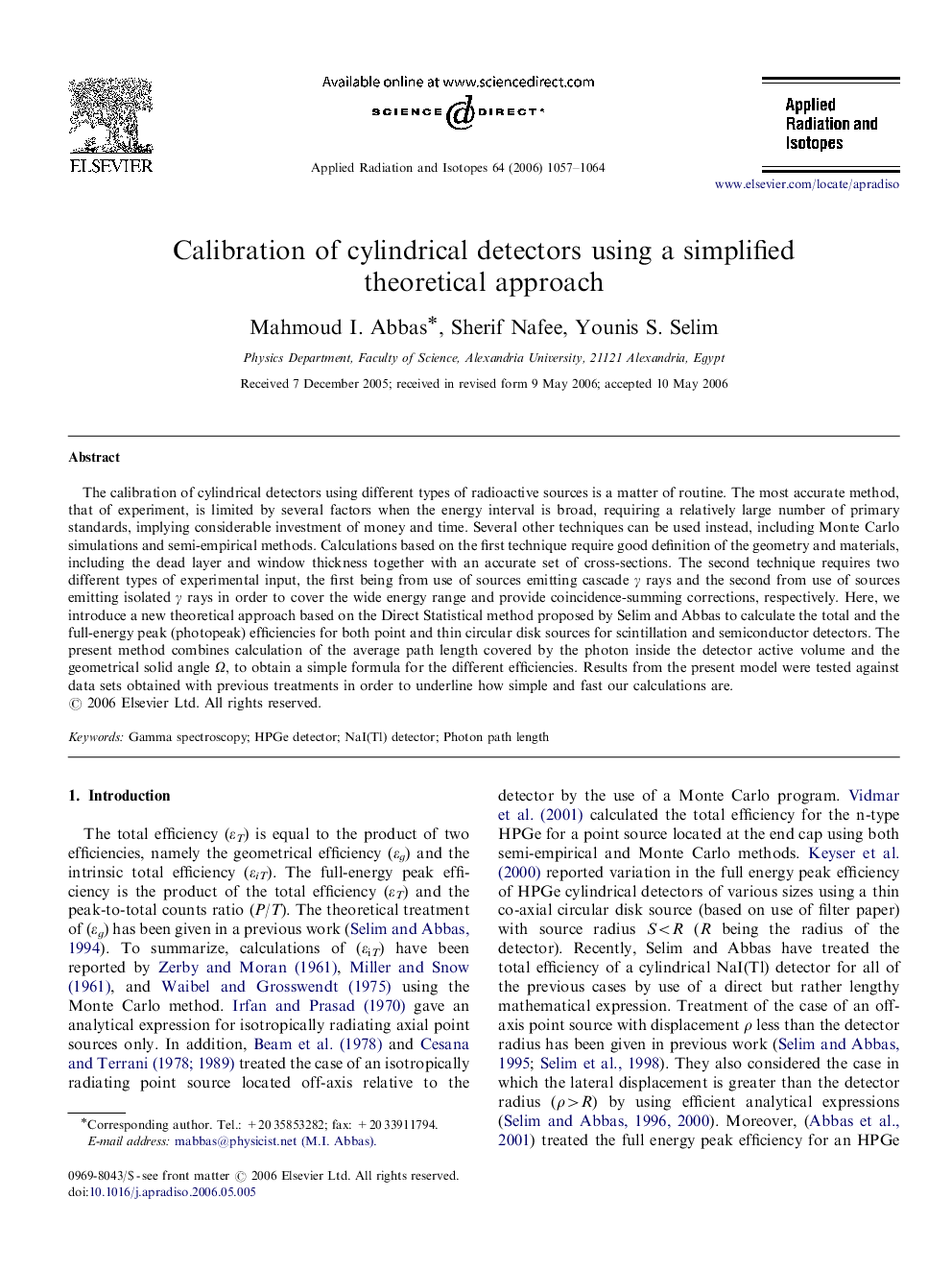| Article ID | Journal | Published Year | Pages | File Type |
|---|---|---|---|---|
| 1879934 | Applied Radiation and Isotopes | 2006 | 8 Pages |
The calibration of cylindrical detectors using different types of radioactive sources is a matter of routine. The most accurate method, that of experiment, is limited by several factors when the energy interval is broad, requiring a relatively large number of primary standards, implying considerable investment of money and time. Several other techniques can be used instead, including Monte Carlo simulations and semi-empirical methods. Calculations based on the first technique require good definition of the geometry and materials, including the dead layer and window thickness together with an accurate set of cross-sections. The second technique requires two different types of experimental input, the first being from use of sources emitting cascade γ rays and the second from use of sources emitting isolated γ rays in order to cover the wide energy range and provide coincidence-summing corrections, respectively. Here, we introduce a new theoretical approach based on the Direct Statistical method proposed by Selim and Abbas to calculate the total and the full-energy peak (photopeak) efficiencies for both point and thin circular disk sources for scintillation and semiconductor detectors. The present method combines calculation of the average path length covered by the photon inside the detector active volume and the geometrical solid angle Ω, to obtain a simple formula for the different efficiencies. Results from the present model were tested against data sets obtained with previous treatments in order to underline how simple and fast our calculations are.
